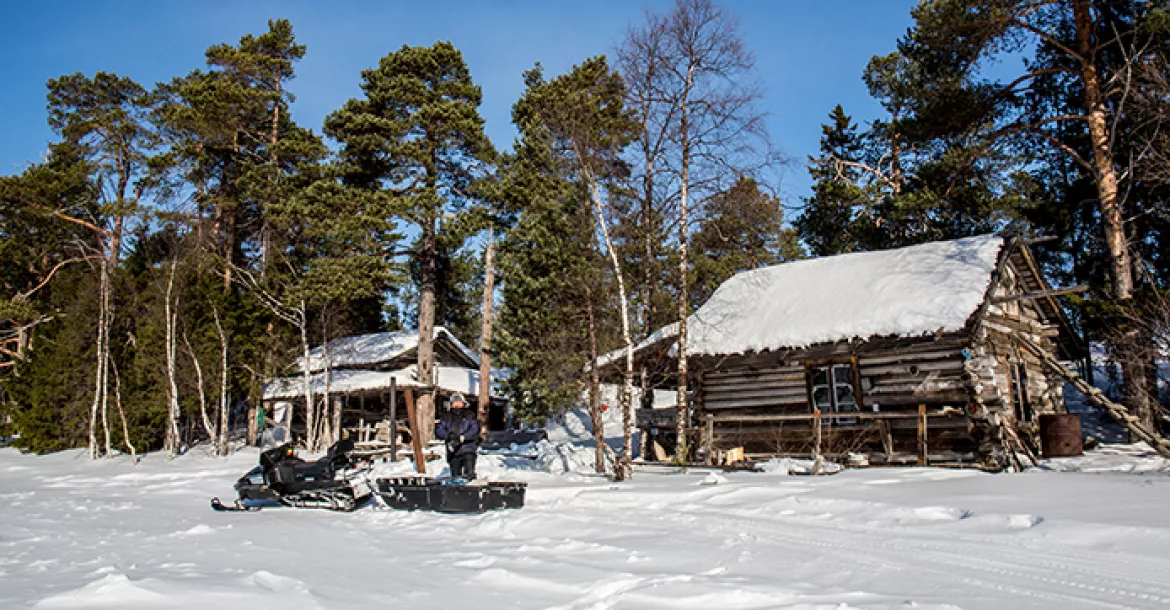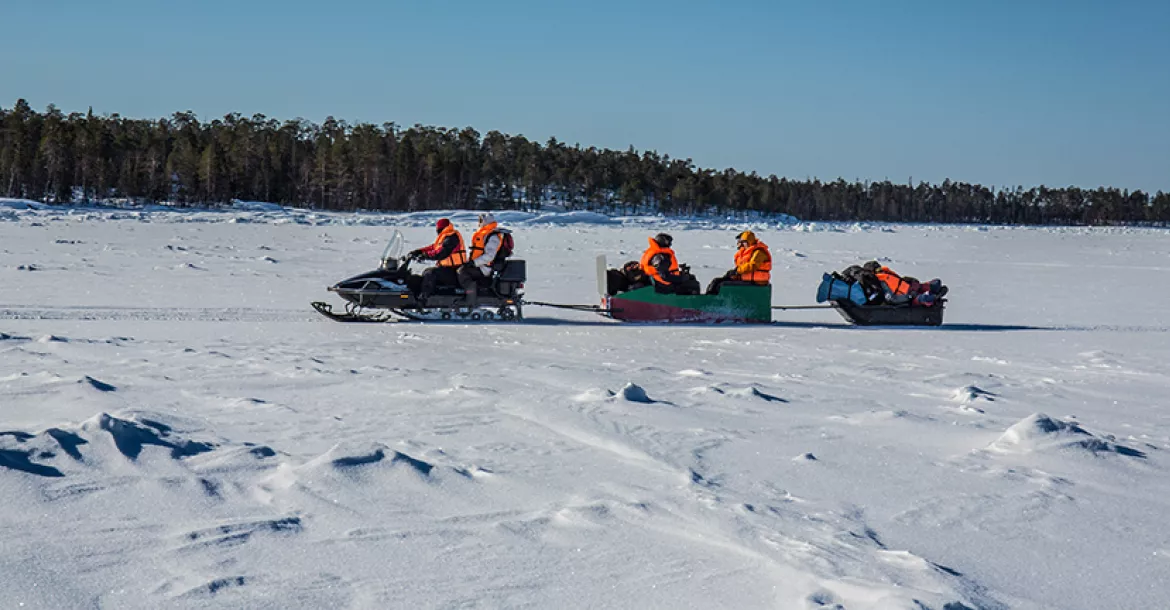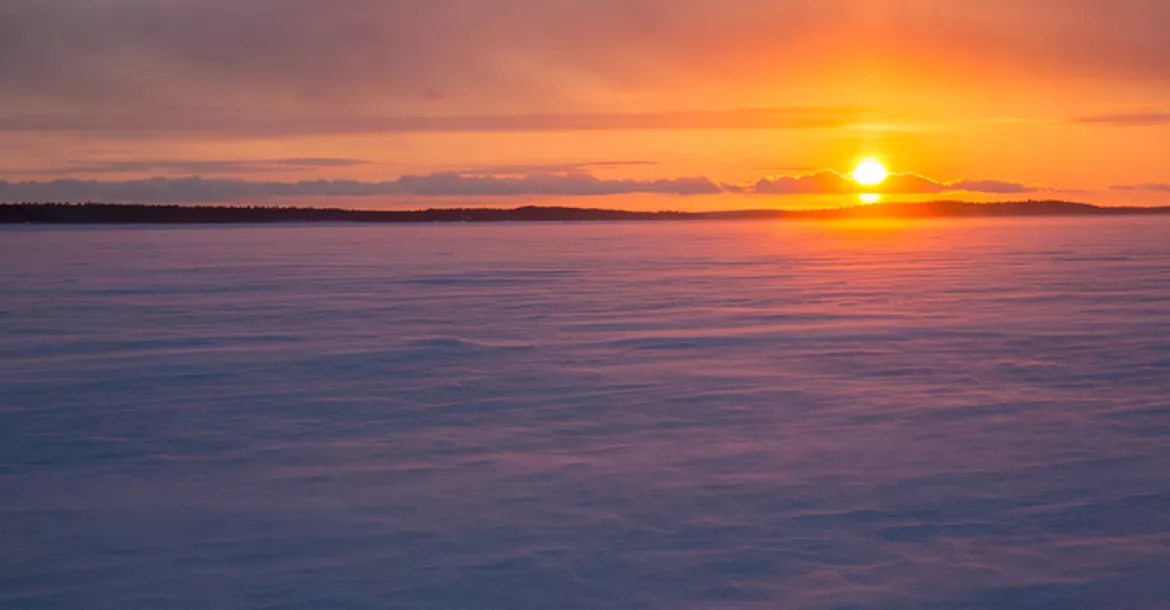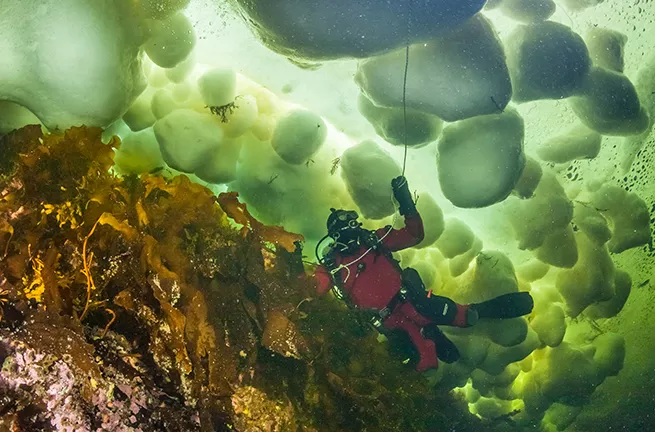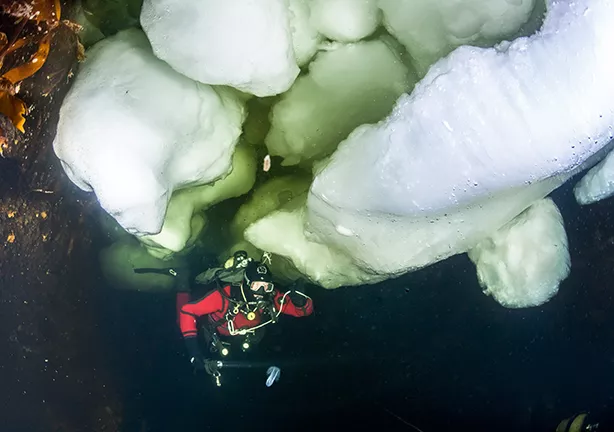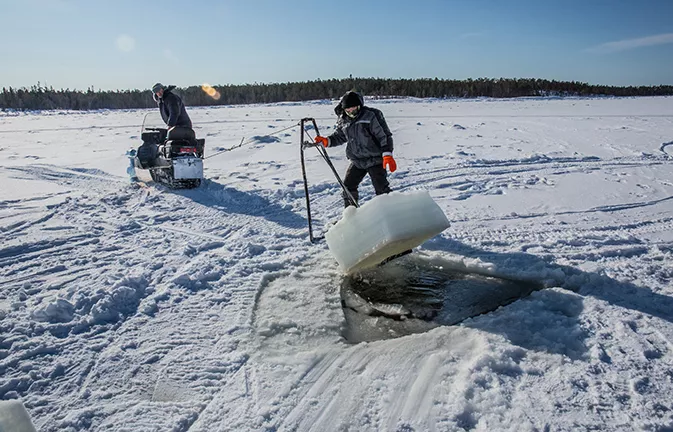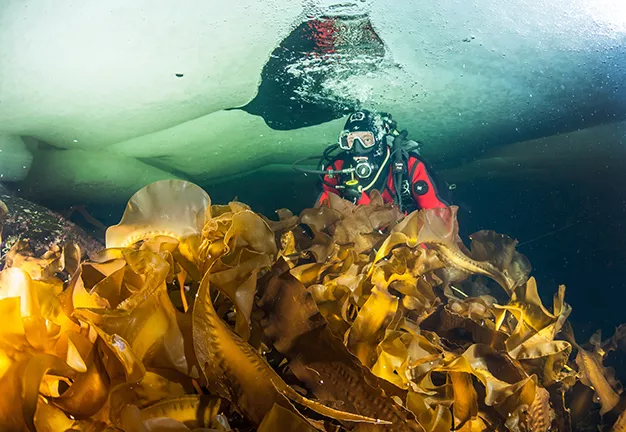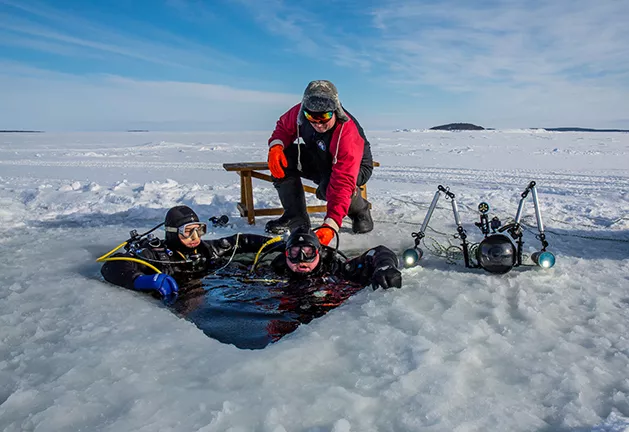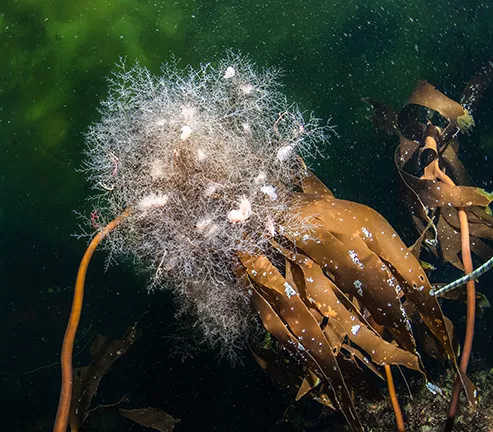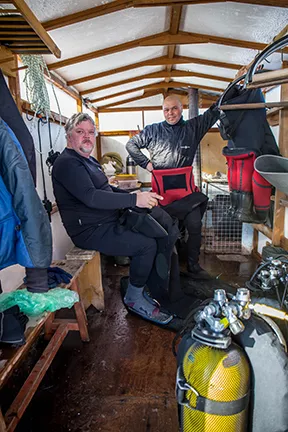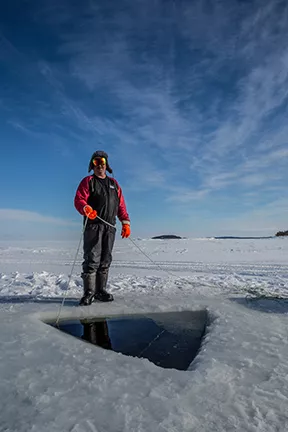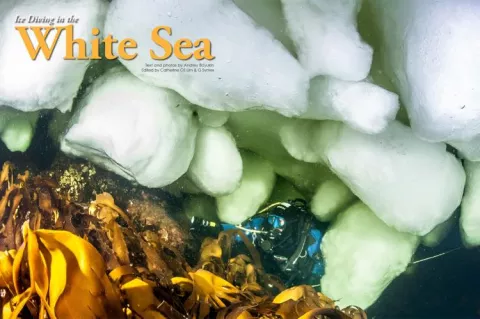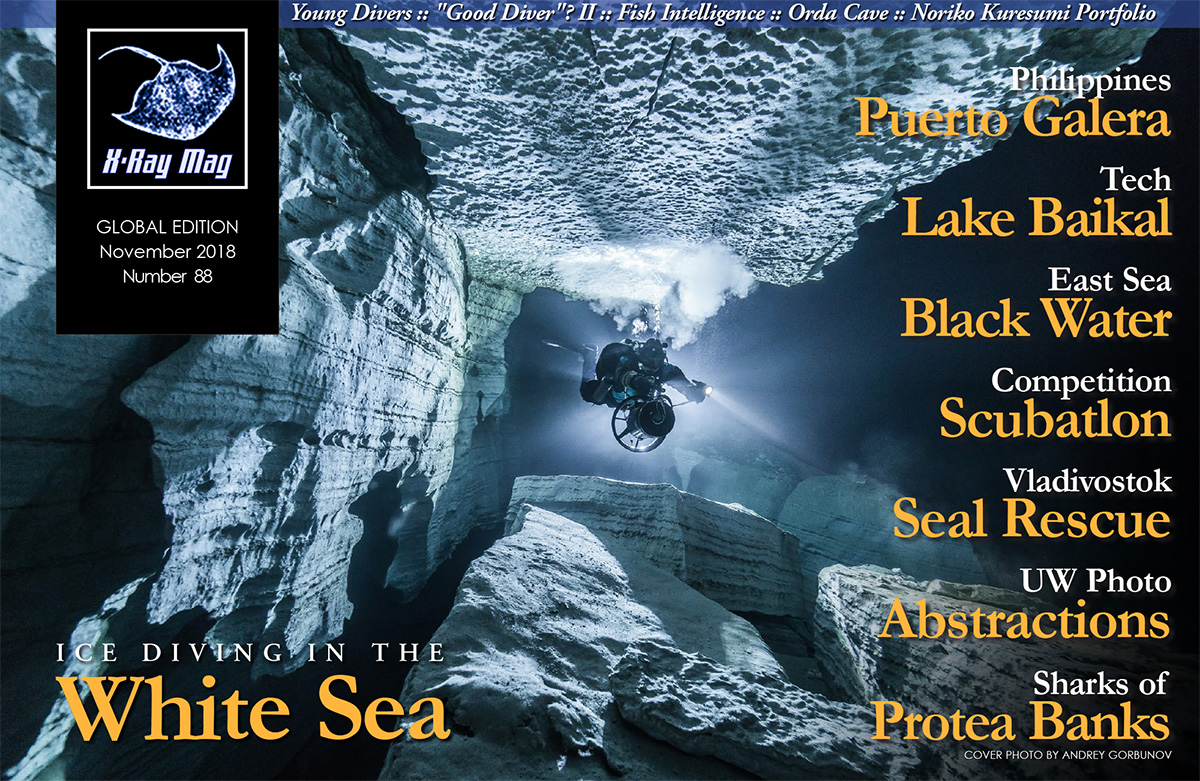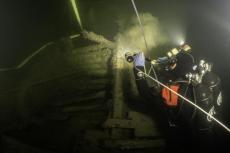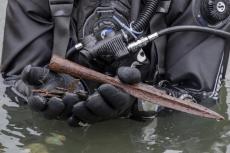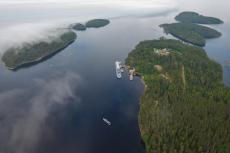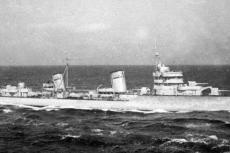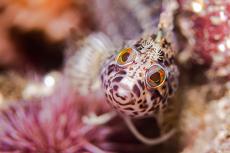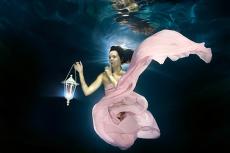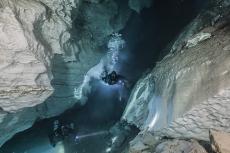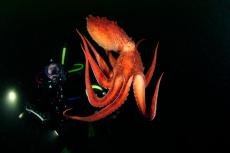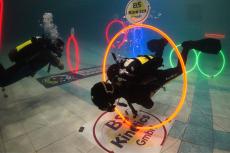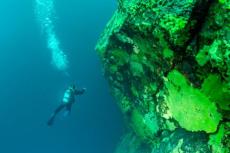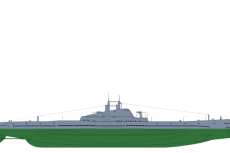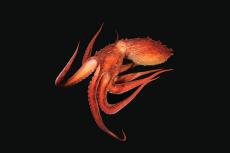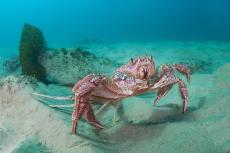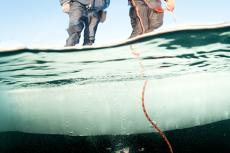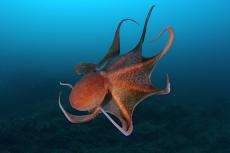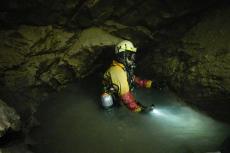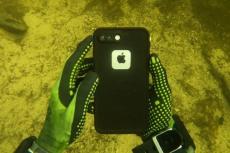Not many divers like to dive in cold water, especially under ice. A possible reason for this may be that they do not know about the new, modern, comfortable equipment for this kind of diving—equipment which can turn these extreme dives into a curious and fascinating vacation. Today’s new drysuits, toasty warm undergarments, suit heaters made of modern materials, dry gloves and cold-water regulators, together with proper and well-organized dive procedures, allow one to enjoy diving under the ice more comfortably, spurring many to look for new underwater adventures in the ice-covered places of the world.
Contributed by
I was told all this by an old friend (and expert diver) because he was keen to entice me (just recently returned from a dive trip in the tropics) to take part in a dubious expedition somewhere far to the north and under the ice. But at the time, it seemed to me to be an extreme adventure, so I had some doubts.
Winter is long here, and I had already had my fill of warm water and colorful fish, so I listened to his authoritative comments and expert opinions and decided to test myself once again.
Choosing a location
Lake or sea? How does one choose the right place for ice diving? A worthy question. I had a little experience diving under the ice with some friends in a nearby frozen pond, but it did not give me much joy. There was a muddy bottom, a ceiling of flat ice above, a rusty car below and a view back to an ice hole. There was absolutely nothing to admire, so it only took 10 minutes of diving for me to get bored and return back to the surface. But my dive equipment worked perfectly; I did not freeze in the usual drysuit. However, now I wanted to experience something very special—really fascinating.
So where can one find the maximum quantity of ice? At the Poles of the planet, of course. So, I thought, maybe I should not limit my flights of fancy and just go diving at the nearest pole—the North Pole! It sounded much more exciting and tempting than winter diving in the local lakes. Then, I started to study this question, and I realized that my way to another really fascinating under-ice world was to dive one specific unique sea—the White Sea.
The White Sea
It is very likely that people called this sea the White Sea because it is the only sea which, for most of the year, is covered with ice. It is located near the Arctic Circle, north of Russia. Once upon a time, it was a large glacial lake, but then the level of the world's oceans rose, and the saltwater of the Arctic Ocean began flooding in.
The maximum depth of the White Sea is 347m, with an average depth of 67m. Visibility under the ice reaches 20 to 30m. The sea is famous for its biodiversity. It is full of life, even in winter. It has thickets of kelp with lots of animals living in it, including various fishes, starfishes and sea hedgehogs, crabs, jellyfishes, bright sea anemones and soft corals, sponges, hermit crabs, shrimps, cods, catfishes and seals.
Daily two-meter-high tides break down thick ice and create massive bands of coastal hummocks, which are especially picturesque when viewed from underwater. The salinity of the seawater is 25ppm; therefore, water temperature here under the ice can reach -2°C (28°F) in winter time. It is a weighty and extreme factor in testing the suitability, performance and reliability of any dive equipment.
On the Arctic Circle
To fulfill the dream of diving in the White Sea with my passion for adventure (more than captivity), I had to travel 28 hours by train from Moscow to get to the quiet, snow-covered station at Chupa and then drive another hour by car on a wintery road through thick virgin forest to the village of Nilmoguba. Here, I found a unique dive center with 20 years of experience in the organization of ice diving.
Ice divers from all over the world meet in this place on the White Sea during the season when the sea ice is solid from February to April. They study and train here to prepare to dive in the coldest places on the planet, including the North Pole. So, it is interesting to be here to test oneself, one’s equipment and underwater camera, while at the same time being able to meet and talk with real-life professionals and experts in cold-water diving.
Outside on the road, there was a ringing frost, at -20°C (-4°F). I brought with me a set of modern winter undergarments made with PrimaLoft synthetic microfiber thermal insulation
material—these are the warmest undergarments on the market made of a thick, power-stretch material— which I wore under a drysuit; plus, dry gloves and cold-water regulators.
On the morning of my first day in Nilmoguba, I had breakfast in this distant place—a corner of the world completely overlooked by average divers—located in a dense coniferous forest on the shining shores of the White Sea. I was pleasantly surprised when I heard multi-lingual conversations and saw a lot of enthusiastic ice divers from many parts of the world. This was more like an international symposium—a practical seminar for foreign participants and experts in ice diving—taking place in the snow and ice of the Russian Arctic North.
They were passionate people, and they spoke different languages, but they talked about the same things: the features, dangers, problems and benefits of ice diving; how to act in extreme situations and the possible ways to avoid them; about proper equipment; overcooling and overheating; about orientation under the ice; about the beauty and uniqueness of the under-ice world. It was very interesting listening to everyone. I immediately realized that I had not been mistaken in coming here; I felt I was in the right place at the right time.
Rules of White Sea diving
The pre-dive briefing was an important and significant stage in the preparation for a dive in the White Sea. Dive guides talked about the safety rules and the specifics of using regulators and equipment for a dive in saltwater with a temperature of -2°C (28°F). For all recreational divers, only no-decompression dives were recommended here, with a maximum depth 20m and a dive time up to one hour. As a result of many years of experience, several simple rules have been formulated by the dive center here, making ice diving available to most people and turning ice diving from an extreme type of diving into a mainstream one.
Safety line, teams and signals
During the two dives of the day, divers descended in pairs, fastened to one safety line by carabiners, at an accessible and convenient distance from one another (approximately every 2.5 to 3m). This distance left enough freedom of movement for each of pair of divers. A pair of divers under the ice are like cave divers in an underwater cave; they can always share air with each other. So, in the company of one’s buddy, it is not only more fun, but it is also a lot safer.
Safety line. The correct safety line to use is a safety rope 40m long and 8mm thick, with neutral buoyancy so that it does not sink or float. It should not cling to hummocky ice or damage the underwater landscape, and it should let you confidently transmit signals through the entire length of the line.
Sea ice is uneven, so you need a rope that is guaranteed not to cling to the surface of the ice. The length of the rope is determined by the distance an average prepared diver can freedive, swimming while breath-holding, in the event of an emergency.
Teams. In each team, there is a Diver #1 and a Diver #2 and a support person at the surface.
- Diver #1 always holds the safety line in his or her hand, controlling it and communicating with the surface support person on the edge of the ice hole with signals, or tugs, on the safety rope.
- Diver #2 also holds the safety line in his or her hand but communicates via tug signals and hand signals only with his or her dive buddy (Diver #1).
- The support person on the surface stays near the ice hole and always holds the rope in his or her hands, never leaving it and always paying attention so as not to miss any tug signals on the rope from Diver #1 underwater.
Signals. One, two or three tugs are the main signals in ice diving communications. Every 3 to 5 minutes, the support person on the surface checks and collects any slack on the rope and sends signals to the divers. The time interval between a signal-tug-question and a signal-tug-response is 2 seconds (with a repeat of the signal-tug-question after 5 seconds). Signals have only two meanings: “Pull me out of the ice hole,” or “Do not pull me out.”
- One tug of the safety line is a test of the connection and the question-answer timing, to see if everything is okay and understood. If there is no answer, a support person waits for 5 seconds and repeats the question. If there is no answer from the diver underwater, the support person once again repeats the question after 5 seconds. After three repetitions without an answer, the support person pulls out the divers, bringing them to the surface.
- Two tugs on the line is the signal-request to check air pressure in the diver’s tank. This is a typical signal used mostly for beginners in the Ice Diver course.
- Three tugs is the signal to exit to the surface in normal mode.
- Four tugs or more is the signal for an emergency exit to the surface (in the case of ice movement or other emergencies).
Configuration of equipment
For ice dives, one uses an air cylinder equipped with a double valve, and two independent cold-water regulators are screwed into the cylinder valves. One of the regulators has a standard hose, and the second one has a long hose. Each regulator has its own inflator, or drysuit hose, and a gauge.
During the first dive, my cold-water regulators with factory settings were frozen in 15 minutes (they went into free-flow). So, I followed the advice of the experts at the dive center and set the intermediate pressure in the first stage of my regulators to 8 bars. Only after that did my regulators stop freezing, allowing me to complete hourly dives in icy waters.
Statistical research was done at the dive center, investigating what kind of equipment and what type of safety procedures divers choose for ice diving. And the research showed that a significant majority of divers preferred the dive procedure in which two buddies used one safety rope, with each diver using an air cylinder with double valves and two regulators.
“Check stop” procedure
One of the most important rules at the dive center involves what is called a “check stop.” Every diver is required to undergo this procedure at the beginning of each dive. To do this, you go under the edge of the ice hole with your dive buddy and remain in position with positive buoyancy, about one head-span from the ice and one arm's length from one another. We hold here, very close to the edge of the ice hole, so we can quickly pull ourselves back out of the water and onto the surface of the ice at any time, in case there is a problem.
Then, we take three full deep breaths from the main regulator, we check the air pressure on our gauges, and we check that the arrows on the gauges do not move. Then, we each find our second reserve regulator, take it in one hand, and only then do we exchange it with the main regulator. We again take three full deep breaths from the reserve regulator, checking the air reserve on the gauge, and that the arrows on the gauge do not move. After verifying that both regulators are in good working order, we return them to their original positions. We then check all our other items of gear: the buckles on our fins, our masks, weight belts, inflators, etc.
“Experienced diver” test
This is a test to check one’s ability to share air. All ice diving buddies are required to do it at the beginning of each dive, after the “check stop” procedure. Keeping neutral buoyancy, the pair of diving buddies holds their position under the ice opposite one another. One of the divers signals to the buddy that he or she is out of air. The buddy diver, or rescue diver, takes his or her reserve regulator with the long hose and passes it to the diver out of air.
The out-of-air buddy diver takes this long-hose reserve regulator, places it in his or her mouth and takes three full deep breathes. The buddy diver checks the working order of the reserve regulator, and if it works, the buddy diver gives the hand signal for “OK” to the rescue diver. Then the buddy diver gives it back to the rescue diver and goes back to breathing from his or her own main regulator. After that, the pair of divers repeats this procedure in the reverse order. Now the former rescue diver shows that he or she is out of air and receives a long-hose reserve regulator from the buddy diver.
The former rescue diver also does three full deep breaths on the reserve regulator, checking that the regulator is working normally, gives the “OK” hand signal and returns the reserve regulator back to the buddy. Now the two-diver team can be sure that, in the case that one of their regulators freezes (or goes into free-flow), they can use one of their spare reserve regulators. Because they are now ready to use the spare regulator, it means that they will have enough time to safely return to the surface.
Ice diving wisdom
With the dive center’s long experience in ice diving, they have found that two cylinders with four regulators for two people provides the maximum safety in the presence of agreements between the divers. Working with valves is excluded here, with the exception of solo diving.
Buddy-diving under the ice is possible and safe only if the divers have a mutual understanding, get ready to follow the same safety procedures, think in the same way, and are ready to help each other in all situations. It is for these reasons that the "experienced diver" test was formulated and instituted.
The aims of the safety procedures prior to an ice dive are two-prong. First, the “check stop” checks the interaction and mutual understanding between the divers and the support person at the surface of the ice hole. Second, the “experienced diver” test checks the interaction of the two divers with each other and with the support staff at the surface.
Each year, several dozen people attend their first training course in buddy ice diving. They all have to do three dives in three different ways. First, each has to do a dive with an instructor on the same safety rope. Second, each has to do a dive with a buddy diver who is Diver #1. And third, each has to do a dive with the buddy who is Diver #2.
All students have to practice how to exchange a main and reserve regulator and how to share air with a buddy. Repeating these procedures regularly gives divers mental confidence and increases the level of personal experience for all ice divers. They become confident in ice diving safety procedures and can then more safely focus their attention on the beauty of the world under the ice, ready to perform various creative tasks such as underwater photography.
Instituting these safety procedures has had a very positive effect. The number of emergency situations and emergency exits from under the ice has decreased to one to two events per season.
Ice hole
What size should an ice hole be? This depends on the number of divers placed at one time on the surface of the water. The largest ice hole made here was for 12 divers; it was a New Year's dive. Every year, millions of people on New Year's Eve gather around festive tables to celebrate, but locals here could say that at least one of these festive tables is always set on the bottom of the White Sea!
Ice diving operation
A mobile ice camp provides comfort and convenience to ice divers at a multitude of dive sites on the ice-covered sea. Warm mobile huts with heated toilets can be moved across the ice from one dive site to another. Divers store their equipment and change their clothes in these warm huts. After a day of diving, divers can leave their wetsuits, undergarments, BCDs and regulators in the warm huts to dry out completely overnight. This season, there were 12 mobile warm huts on the ice.
Ice dive sites of the White Sea
In the vicinity of the village of Nilmoguba, there are 29 dive sites. Snowmobiles and sledges loaded with divers and diving equipment are the main transport here. For a short diving week, we managed to dive a few of these sites. They were interesting and varied in their underwater landscapes.
Yellowish-green ice with strips of hummocks—this is a typical picture of the subglacial world of the White Sea. Huge ice blocks float and descend on tidal currents, creating unique, ever-changing piles of coastal granite boulders.
Here, under the ice, you can find icicles shaped similarly to cave stalactites. It is the freezing zone of concentrated saline solution—the place where the water temperature drops to -5°C (23°F). When at such a low temperature, highly concentrated saline solution begins to drain from the tip of a supercooled icicle. Then, everything it touches turns into ice, so it is called the "ice finger of death."
Stones Garden and Miracle Stone are dive sites near Krestovy Island, places for shallow diving under the ice in crystal-clear water along the sea bottom, which is overgrown with thick, bright and plump thickets of sea algae, or kelp. This is a great place to start diving, test equipment and drill buddy skills. Easily accessible, it is just 15 minutes away by snowmobile. There are a lot of subjects for under-ice macro photography, so enthusiastic underwater photographers spend several hours per day on ice dives here.
Biofilters Bay is a dive site near a high cliff that is shaped like a mammoth. It is known to many underwater photographers for its picturesque ice hummocks. It was here, under the ice, that I saw my first small icicles, or "fingers of death." There are shallow depths here only in winter time, and just under the ice, it is possible to see an unusually dense layer of hydrogen sulphide accumulate. It is so thick and muddy that it completely hides a diver submerging into it. It is a very interesting subject for enthusiasts of ice diving photography at a site with easy access, located just 30 minutes from the dive center.
Kasyan Island
To get to the dive sites Belushya Rock, Ludushka and Rocky Forehead near Kasyan Island, we had to travel by snowmobile about an hour along an endless icy vastness. When we got to the place, it was pretty covered in snow. The fun of the trek warmed us, and we thawed in the warm huts, donned our drysuits and went diving.
Belushya Rock was a five-meter-high underwater rocky ledge rising from a flat sea bottom almost to the surface of the ice. The top of it was covered with dense thickets of kelp, and the vertical wall was a garden—it is probably more correct to say it was a flower bed, with bright fluffy actiniums.
Rocky Forehead and Ludushka dive sites are located a hundred meters from the flowerbed with the sea anemones. During high tide, we dived and took photographs here among the largest underwater hummocks that I have ever seen. The ice hummocks looked particularly picturesque with the frosty sunny day.
On the way back from Kasyan Island, we were caught in a snowstorm. Thankfully, our guides knew the road well. That's why we did not get lost along the way through the boundless snowy expanse, and we even took the time to take pictures of the winter sunset over the White Sea, which was amazingly colorful.
Safety improvements and track record
About 2,000 ice dives per season are made at the Arctic Circle Dive Center. Since 1998, the safe, comfortable and enjoyable method of ice diving has been tested and improved here. In the period from 2002 to 2008, ice diving methods for two ice divers, which use only one safety rope, were tested and adopted here. And this method is now recognized as the safest one.
The partnership system (with no more than two divers on one safety rope) was formulated over the next ten years of diving. Prior to the year 2000, when some accidents happened, it was about 1% of the average quantity of dives. They were mostly equipment failures and emergencies causing a dive to be aborted. But with the start of the new partnership system, the frequency of emergencies dropped to one aborted dive per 3,000 to 4,000 dives.
Exceptionally, the White Sea dive experiences allowed instructors of the dive center to organize successful ice diving expeditions to the North Pole, and on the basis of the recommendations developed here, to dive to a depth of 100m under the ice in the White Sea in a water temperature of -2°C (28°F), and make the world's only apnea dive (freedive) under the ice to a depth of 65m at the North Pole.
As I returned to Moscow, I reminisced joyfully on my experience at the White Sea. I felt enlightened and cleansed by the whiteness of the Russian North. I learned that over the past two-month ice diving season in 2018, 147 divers dived in the White Sea at Nilmaguba. The divers came from England, Ireland, China, Taiwan, Hong Kong, Mexico, India, Holland, Austria, Germany, France, Israel, Philippines, Belgium, Ukraine and Russia. The guests made a total of 1,036 dives, which were coordinated by 14 instructors and four divemasters, who also dived 637 times. Training dives under the ice numbered 171, and 55 new Ice Diver certifications were made. The ice diving season of 2018 was very intense and active, and there was not a single real emergency situation. ■

